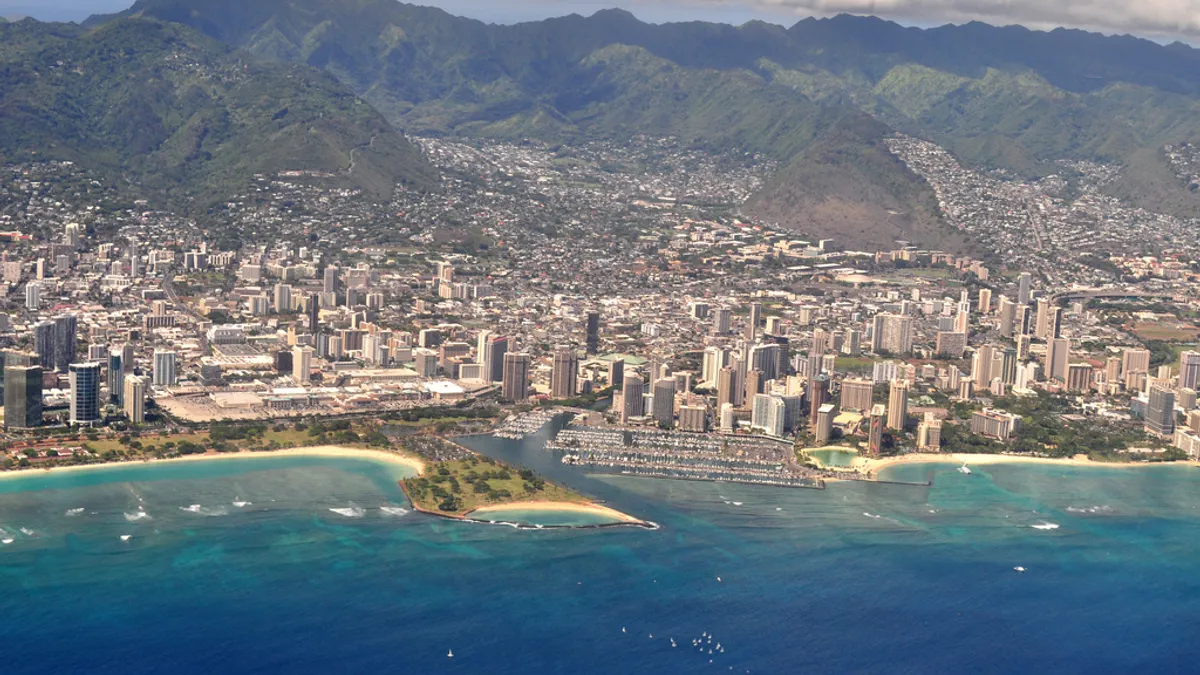Dive Brief:
- Hawaii became the first state to commit to obtaining 100% of its electricity from renewables when Governor David Ige signed HB 623, mandating the state’s utilities reach that resource mix by 2045. The law, effective July 1, sets 30% by 2020, 40% by 2030, and 70% by 2040 interim targets.
- The new mandate is expected to significantly boost a Hawaiian economy now burdened by a $5 billion per year cost for the imported oil that supplies about 70% of the state’s current electricity, Argus reports.
- Ige also signed SB 1050, creating parameters for a community shared renewables program that will allow utility customers without renewables-suitable roofs or property to buy shares of large installations. The bill requires utilities to submit a tariff proposal for such projects to the Hawaii Public Utilities Commission and prepare to implement a net metered billing system by 1 October.
Dive Insight:
Ige also signed laws setting a net-zero energy usage by 2035 target for the University of Hawaii and establishing a hydrogen energy program through the Hawaii Center for Advanced Transportation Technologies.
Recent analysis from Stanford engineering professor Mark Z. Jacobson finds Hawaii can economically meet 100% of its energy needs with 14% residential rooftop PV, 9.7% PV power plants, 7% concentrating solar power plants, 12% onshore wind, 16% offshore wind, 9% commercial and government rooftop PV, 1% wave energy, 30% geothermal, 0.3% hydroelectric, and 1% tidal energy.
Jacobson calculates the transition would create 8,239 construction 40-year duration jobs and 4,239 such operations jobs. It would also save $1.6 billion per year, or 1% of state GDP, in avoided mortality and illness costs. The footprint would be 0.21% of Hawaii’s land and spacing would require another 0.82% of Hawaii’s land. It would reduce today’s $0.303 per kWh electricity rate to $0.119 per kWh.














